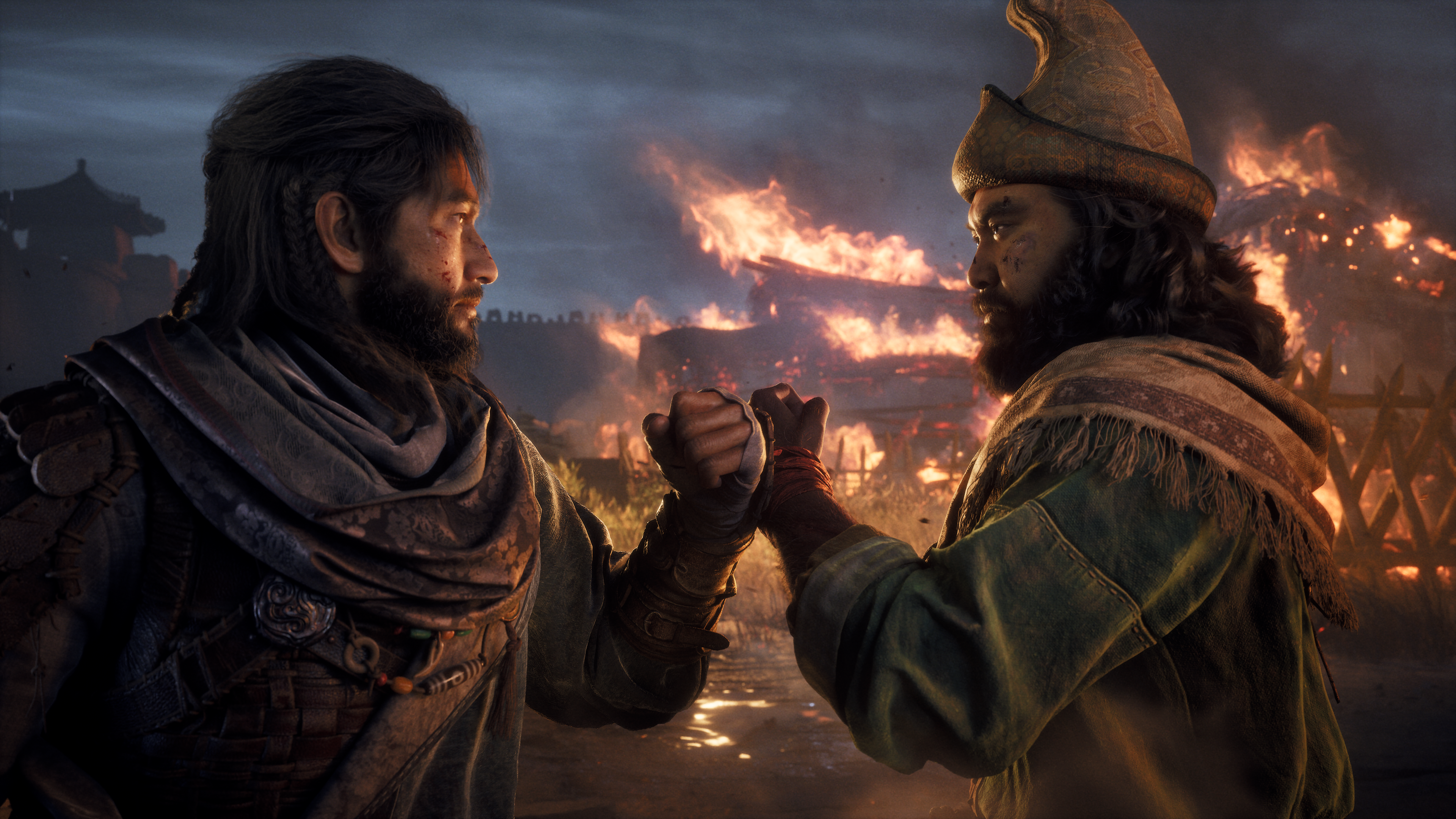
Blizzard Is Open to More Warcraft Movies, But Doesn't Want to be a Filmmaker
Warcraft franchise director John Hight says he loves the 2016 film Warcraft. It’d be silly of him to tell me he doesn’t, given his job. But in a world where it seems like every major gaming IP is going ham on multimedia, Hight differs notably from his fellows in one major way: he doesn’t want to be a filmmaker.
Speaking to IGN at the Game Developers’ Conference in March, we asked Hight about the potential for future Warcraft movies. Though he admitted the idea would “certainly be interesting,” he added that he didn’t think Blizzard should explicitly get into the filmmaking business. “We make games and I think that games will always be our core, and so Warcraft will be centered around that,” he said.
And more than just Blizzard, Hight himself doesn’t want to get caught up in thinking he needs to jump into a different industry. “I don’t want to fall into the trap of ‘I will be a filmmaker now.’ I think leave that to the folks that really know what they’re doing.”
Some of my colleagues get enamored with the idea of becoming filmmakers.
“If we can find talent in other areas doing media that have that shared love and passion for Warcraft, absolutely. But I think I’ve seen, unfortunately, some of my colleagues get enamored with the idea of becoming filmmakers and leveraging the opportunity that they have in owning the IP or controlling the IP to be an entry into filmmaking. But there are so many professionals who have been doing this for so many years, [and] there could be dozens if not a hundred films that can execute so much better. I wouldn’t have somebody that only made movies come in and try and build a game like Warcraft, right? So I think finding those partnerships is the right approach.”
Hight feels the same way about other video games. I mention companies like Riot, who have licensed out the League of Legends IP to multiple other indie studios to make more games out of it – though it’s a practice the publisher has notably wound down amid budget woes. Would Blizzard ever do the same? Again, Hight is interested, but understandably picky.
“Certainly open to people who really get it and have a cool idea about how to express Warcraft and if we feel like aesthetically they’re going to be able to hit the bar,” he said. “…I think if we found the right partner, found the right situation, I think especially if they have a proficiency in a game genre that we really don’t, I think that’d be the ideal partner for us to work with and we’re open to that, but that’s relatively new. I’m open to it because I want to have Warcraft out there a little more than it is now, and I also don’t want to have us grow so fast that we’re no longer able to serve the audiences we have. But I think there’s some benefit in leveraging other companies that share our love for it, have a really cool idea, share our belief in quality and have the ability to execute on it. But now that’s probably a pretty small list, right?”
The Warcraft Within
So while you might think Hight, as a franchise director, would be overly concerned with expanding Warcraft to as many corners of media as possible, he instead has his sights set closer to home. He’s clearly proud of the recent mobile release, Warcraft Rumble, which alongside Hearthstone: Heroes of Warcraft is helping spread the property beyond just the MMORPG.
But his bread and butter is World of Warcraft, which is currently winding down its popular Dragonflight expansion ahead of its next big story swing: The Worldsoul Saga. Normally, the content lull between major expansions results in a dip in players, but Dragonflight isn’t seeing that valley. Hight discussed a number of reasons why in his GDC talk, but one key element is a more consistent cadence of new things to do between major story beats. For instance, World of Warcraft recently introduced a goofy, pirate-themed battle royale mode called Plunderstorm. Originally conceived as an internal PvP experiment, playtests at Blizzard revealed that Plunderstorm was fun even when its prototype version was still “really crude and not very good-looking.” So it was re-pitched and reconceived as a limited-time, end-of-expansion event that would unify both retail and World of Warcraft: Classic players for a fun time that wouldn’t have significant consequences for either.
At the time I spoke with Hight, Plunderstorm was mere days old, and it was tough for him to gauge its success. But he did say Blizzard would consider keeping the mode around if the response is enthusiastic enough.
“If they like it, that’ll inform what we do next: whether it evolves an existing system, whether it becomes part of one or both games or whether it continues as an event. We like the notion that there are events that are seasonal in a way that come in just like we do the seasons in WoW itself…What we’re trying to build is a repertoire of fun things for the live team…to be able to pull the arrows from the quiver and use them when we need to use them. If we get a point where we can see the players want a new event or engagement, we can fire up a Plunderstorm or we can fire up some other event. And we are planning a lot of different kinds of events like that.”
Hight has a similar philosophy for World of Warcraft: Classic’s Season of Discovery, a version of the original World of Warcraft with wacky twists on classes, newly-conceived raids, and new hidden secrets. Season of Discovery has proven quite popular, but avid players are already wondering if it has an expiration date. Blizzard has only shared plans for the mode through raising the level cap to 60 and an end-game raid. So we ask Hight if Season of Discovery’s success will allow it to endure beyond that.
He doesn’t fully confirm that Blizzard has more in the tank for Season of Discovery past level 60, but he does heavily imply Blizzard is poised to respond to its popularity.
If we can see the players want a new event, we can fire up a Plunderstorm.
“I think there’s going to be things that will repeat and then there’s things that will evolve,” he says. “I can’t tell you how that turned out because we’re still seeing how players are responding to it, what they’re telling us they like that may be one of those that we evolve and we do a new incarnation of it or maybe one that we repeat the cycle. What was fun about that is the Classic team itself has some really involved players. They love supporting and playing their own game, and so those ideas both for Hardcore Mode and for Season of Discovery came out of that developer team. We turned them loose. We were like, ‘Give us your pitches. Tell us the things that you’d like to do that you think we would like.’”
In every interview I do with World of Warcraft executives, I ask them if the 20-year MMORPG can still serve as the beating heart of the franchise for the long-term. Hight, like all the other executives I’ve spoken to before him, says yes. He hopes World of Warcraft will evolve “for another 20 years.” But to do so, he adds, it needs to adapt.
For instance, he says, players are more conscious of their time than they used to be. Blizzard has already implemented features like tutorial zone Exile’s Reach, character boosting services, and other elements to make it easier for players to “get in, find the fun, and find their friends” even if they’re only logging on for a few minutes. Which brings Hight back once again to the point he’s hammered home throughout both our interview and his GDC talk: it all comes down to responding to the game’s community, again and again. Sure, it’s nice to bring in new players, and he hopes to do so. But for Hight, everything comes back to sustaining the existing community, and convincing lapsed players that there’s something interesting to return to.
“Returning players is one of our biggest segments,” he adds. “They may sit out an entire expansion, they might have been gone for five years, but they like to come back in and check it out.”
Rebekah Valentine is a senior reporter for IGN. Got a story tip? Send it to rvalentine@ign.com.





